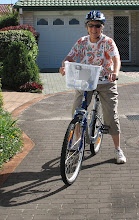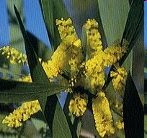Today I wish to share a recent walk in a seaside area which is being regenerated by a bush care group.
These enthusiastic, energetic people are hoping to rid this small section of our land from invasive foreign weeds, and to preserve natural balance for the plants and animals which live here.

This is the 'flower' of an Australian banksia tree. It develops through several stages, each of them beautiful in different ways. Even the pale blue-grey backs of the leaves and the reddish branches of the tree itself have a stunning beauty.

This is a longer view of the same tree. Look closely to see other, woodier stages towards the development from flower to seed. You'll see the finished article below, lying on the ground along with fascinating dead leaves and sticks.
The photograph shows the banksia cone where the little seeds lie before being blown away to find a safe spot to germinate. The cone is the source of the mythical Big Bad Banksia Man, a character of May Gibbs' stories upon which Australian children have been fed for generations.
The Banksia Man was the dreaded dark shadow in the lives of May Gibbs' bush people, including the Bush Babies. Snugglepot and Cuddlepie were inspired by the blossoms of gum trees, and are seen below sitting on a gum leaf.

A May Gibbs illustration

The longer, thinner leaves here are 'gum' or eucalyptus leaves, a species which has both positive and negative properties so far as humans are concerned. It's the source of eucalyptus oil which is used widely for medicinal purposes.
However, that same oil is the demon which explodes, and feeds our bushfires, turning them into monsters riding on the winds of destruction.
Mind you, some Australian trees and shrubs require the heat of fire to activate their seeds, so nature knew what she was doing ...
Many forms of eucalypt trees are found almost throughout Australia.

These delicate tendrils and nuts belong to the Australian Casuarina or She-Oak. They grow close to the shore in sandy areas of bush, and even on the cliff tops. They are one of my favourites.
The nuts are quite lovely in appearance and make great native plant jewellery.

My bloggy mates have met the pandanus tree before - regal in its ugly beauty.

As with nature everywhere, you discover only when you really take time to look. This patch of Australian bush holds secrets that only curiosity and patience will reveal.

Here is a long view of the track I travelled with you today. We'll do it again in our next post, and make more discoveries.
Have you really looked at the natural surroundings near your home? Even a city park will reveal amazing detail. Tell me about what you found in a comment ...

































